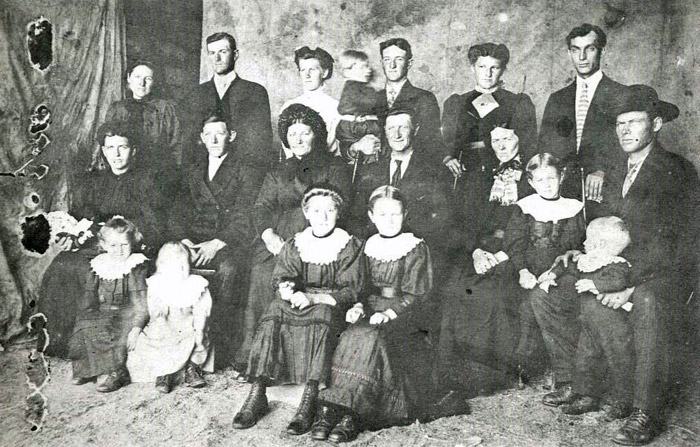Grünthal was not initially settled in 1874, and the 6 sq mile township section of 5-5E centred around Grünthal was largely unsettled until 1875 or ’76. Initially, the communities of Gnadenfeld and Bergfeld to the West, and Schönsee to the North saw more growth, however, a large migration to the West Reserve between 1877-83 led to a large decline and the eventual loss of these communities. The village of Grünthal was established on a North-South axis along what is today Church Ave. The village rested along the profile of the gravel ridge that cuts through the entire region, a remnant of the lakeshore of Lake Agassiz from between 10,000 and 9,300 years before present.
Grünthal was likely established in 1876 by villagers who were connected to those already settled in the villages of Schönhorst and Schönenberg located to the East. Initially, there were only 11 households, making it one of the smaller communities in the East Reserve. By 1886, the village repositioned itself by building a church and subsequently a mill and store by 1892, a cheese factory in 1893 and a Post Office in 1894. This led to Grünthal becoming the regional hub for the southern parts of the East Reserve and its location meant travelers passed through it along the natural road created by the Hochrüchen, or the high ridge of gravel that cut towards Steinbach.
The land in township 5-5E was fairly marginal, and the Dominion Lands survey of 1872 highlighted only a few sections of prairie. These patches of land within the dense brush of the area were the sites judiciously chosen for longer-lived Mennonite settlements. In 1888, nearly 15% of the township 5-5E was returned to the province as non-arable swamp land. Despite this, the villages of Bergfeld and Schönsee were the last surviving villages in the East Reserve to retain their Strassendorf (Open field system) structure, lasting into the 1920s.
In 1911, Johann Braun and Johann Krahn built a new mill and store East of the village half a mile, shifting the focus of the community into an East-West axis. Between 1926-27, the majority of original Grünthal residents emigrated to Gran Chaco, Paraguay, due in part to fear of the loss of military exemption and a sense of betrayal over the institution of English-only public schools. Within the next few years, the community would be repopulated by the Russländer migrants escaping Europe after the Russian revolution.
For a detailed look at Grünthal’s history post-1927, see On Stony Ground: Russländer Mennonites and the Rebuilding of Community in Grunthal, by Dr. James Urry.




